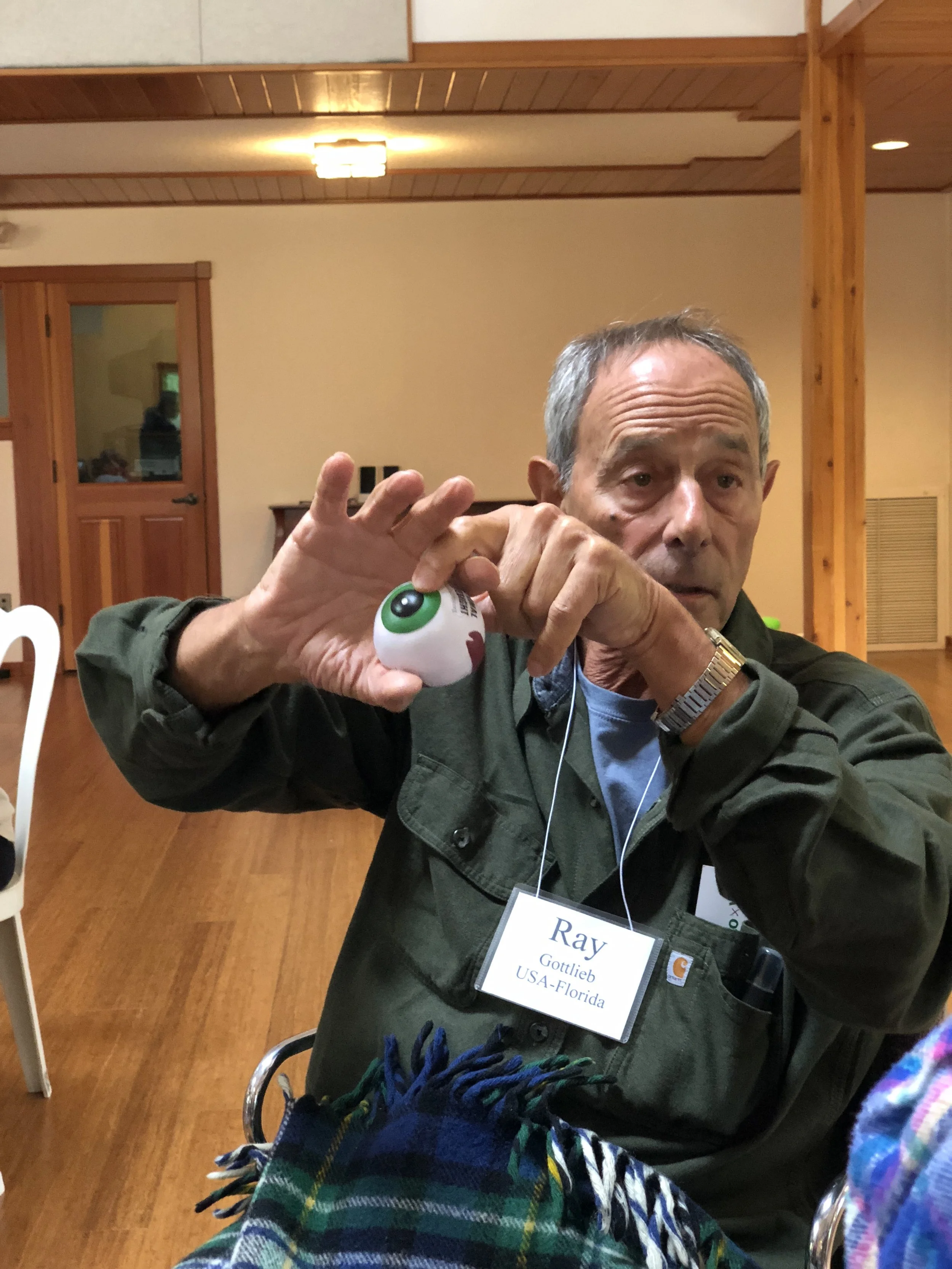METHODS OF TEACHING
In addition to teaching The Bates Method, many members also incorporate complimentary modalities in their work.




Teaching Modalities
Alexander Technique
This technique teaches improved posture and movement to be more aware of your body, improve poor posture and move more efficiently.
Applied Kinesiology (Muscle testing)
This technique (informally called "muscle testing") is a diagnostic and treatment protocol that uses your connection and "knowing" of your body and environment to provide "answers" such as whether a technique or supplement will be helpful for you.
Bach Flower Remedies
Bach Flower Remedies are analogous to homeopathy, using highly diluted flower essences to soothe and heal emotional and physical imbalances.
Bates Method
The Bates Method of eyesight improvement is the centerpiece of this website. All of the other modalities in this list are ways of supporting the Bates Method's central principle of relaxing the eyes and the mind that sees. Follow this link to learn more about the Bates Method.
Behavioral Optometry (Holistic)
Behavioral Optometrists are a very small faction of eye doctors who are trained to help the eyes and the mind to function better and more integrally. A simple example of their tools is the Brock String, which is popular also with Bates practitioners.
Brain Gym (Educational Kinesiology)
The idea behind Brain Gym® is to use physical movement to access different parts of the brain. The various movements and activities can be a great help for children with dyslexia, crossed eyes, and many other conditions that call for improved balance in the brain and body.
Brain Integration Therapy
Brain Inegration Therapy is similar to brain gym, with some added specific balancing techniques.
Breathwork
Various breathing technique help reduce stress and improve other conditions through muscle relaxation and better breathing.
Craniosacral Therapy
A powerful technique used widely by osteopaths, massage therapists and body workers to reopen blocked energy pathways along the spinal cord. Levels of training and certifications vary greatly.
EFT Tapping/Emotional Freedom Technique
A popular, simple technique of tapping on acupuncture meridians while speaking aloud about physical or emotional symptoms a person wants to release. Also called "tapping" or "meridian tapping".
Essential oils
Use of essential oils topically, internally or via aromatherapy for healing support of many health issues.
Feldenkrais
A very subtle guided series of body movements to help a person become aware of tight muscles and let them go.
Havening
A healing modality to help individuals overcome problems from traumatic encoding. Part of a larger group of methods called psychosensory therapies, which use sensory input to alter thought, mood and behavior.
Hellerwork
A system involving deep tissue massage and exercise, designed to help correct posture, improve mobility, relieve pain, etc. The Gentler Form of Rolfing. Structural integration, focused on repairing the fascial layer of the body to improve the structure.
Herbalism
Herbs have been found to help general eye health or even specific diseases.
Massage/Bodywork
Massage provides a doorway for many different healing approaches to relax and balance the mind, muscles and emotions all through the entire body.
Meditation/Mindfulness
Various approaches to calming the mind, usually by sitting still for a while or moving slowly with increased awareness.
Microcurrent Stimulation
Similar to the TENS unit used on joints and muscles, but with a much lower intensity of electrical pulses, aids healing macular degeneration and other conditions.
Nutrition
Modality that focusses on nutrition and supplements beneficial to the eyes.
Occupational Therapy
Occupational therapy (OT) is the use of assessment and intervention to develop, recover, or maintain the meaningful activities or "occupations", of individuals, groups, or communities.
Qigong/Tai Chi
A traditional Chinese practice of exercise and meditation for the cultivation of mind, body and spirit.
Rapid Healing Technique
A revolutionary healing technique that removes fears, hurts, pain, anger and traumas. It is simple and works on all levels of Body - Mind - Spirit.
Stress Point Learning (Rebounder)
Brains can change at every age when challenged by tasks at an appropriate difficulty/skill balance, but only if attention and intention are engaged at a slightly higher level. A rebounder is often used to set up and succeed with this "stress point learning".
Roll Model® Therapy Balls
The Roll Model Method is a soft-tissue conditioning, self-care fitness format that uses the various Roll Model® Therapy Balls for self-myofascial release (self-massage). This may include breath work, CheckIn and ReCheck, elements of alignment, anatomy instruction and mental awareness (such as conscious relaxation).
Sound/Music Therapy
Music and sound therapy use different aspects of sound to improve emotional and physical well-being. Approaches vary. How it works depends on the method being used.
Syntonic Phototherapy/Color Light Therapies
Exposing the eyes and/or other parts of the body to various color wavelengths, frequencies and intensities to accomplish relaxation or healing.
Traditional Chinese Medicine (TCM)
A TCM practicioner usually practices acupuncture and Chinese herbal medicine, and perhaps Chi Gong. These ancient healing arts follow body energy meridian pathways to heal key organs and restore balance throughout the body.
Trager
A rhythmic massage style that entices muscles to let go. It resembles the Bates swing with its back and forth techniques.
Yoga
Yoga is union of body, mind and spirit through stretches and postures called asanas to release stress and tension using breath, awareness, relaxation. Yoga can be practiced with a spiritual component.
Zero Balancing®
Zero Balancing (ZB) is powerful touch therapy for body and mind. Deeply relaxing and energizing, ZB touches your core, at the level of bone, to promote wellness and balance.
Other
The modalities above are featured because they are what the current AVE members are also trained in, and often incorporate into their teaching of the Bates Method of natural vision improvement. Beyond what is listed here, there are countless other alternative approaches that may complement the vision healing process.
